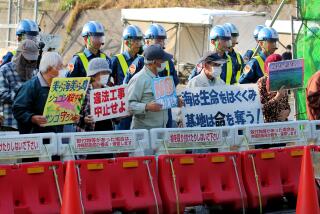NONFICTION - Aug. 11, 1996
WHISPERED SILENCES: Japanese Americans and World War II Essays by Gary Y. Okihiro; photographs by Joan Myers (University of Washington Press: $29.95, 256 pp., 65 duotone photos). Photographer Myers’ stark images of the 10 relocation camps where 110,000 Japanese and Japanese Americans--two thirds of them U.S. citizens--were incarcerated during World War II were taken 50 years after the camps were vacated. Long abandoned rock gardens of Manzanar in California, Topaz in Utah and Gila River in Arizona are bleak reminders of an infamous chapter in history that never should have happened, as are the weathered 1943 elementary school building plaque at Poston, Ariz., and the gravestone of a pet that died in August 1942 at Rohwer camp in Arkansas. Hawaii-born historian Okihiro, a professor at Cornell University, weaves a haunting tale of the Japanese people in their camps through personal accounts of internees, soldiers and his own family’s experience. There also were terrible injustices suffered by the AJAs (Americans of Japanese ancestry) who fought as U.S. soldiers during the war. One group was sent to Cat Island in Mississippi, where “they played the enemy for attack dogs trained to sniff the presumed distinctive odor emitted,” writes Okihiro, by the Japanese. He quotes soldier Yasuo Takata: “Later results showed that this did not make any difference. . . . Each dog trainer sent his dog out to find us. When the dog spotted us, the trainer would fire a shot and we would drop dead with a piece of meat . . . in front of our necks. The dog would eat the meat and lick our faces. We didn’t smell Japanese. We were Americans. Even a dog knew that!”
More to Read
Sign up for our Book Club newsletter
Get the latest news, events and more from the Los Angeles Times Book Club, and help us get L.A. reading and talking.
You may occasionally receive promotional content from the Los Angeles Times.







